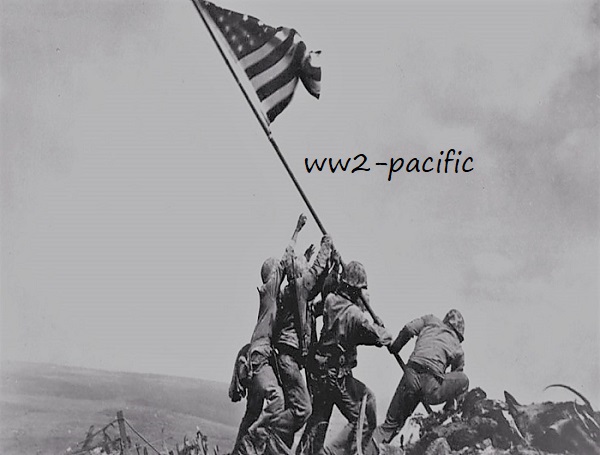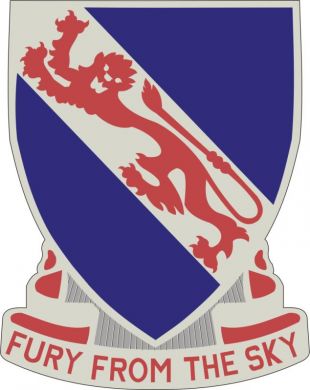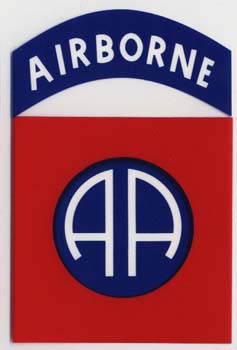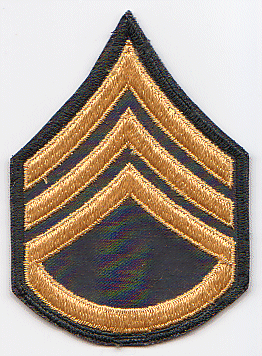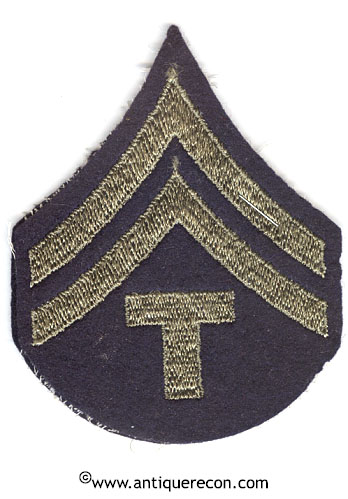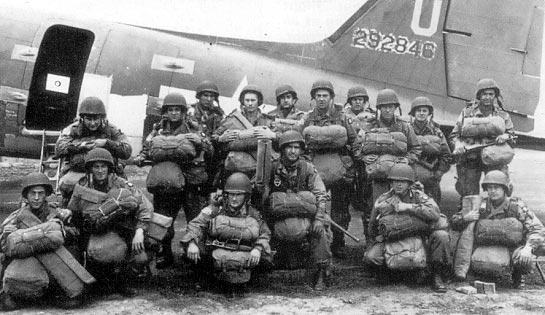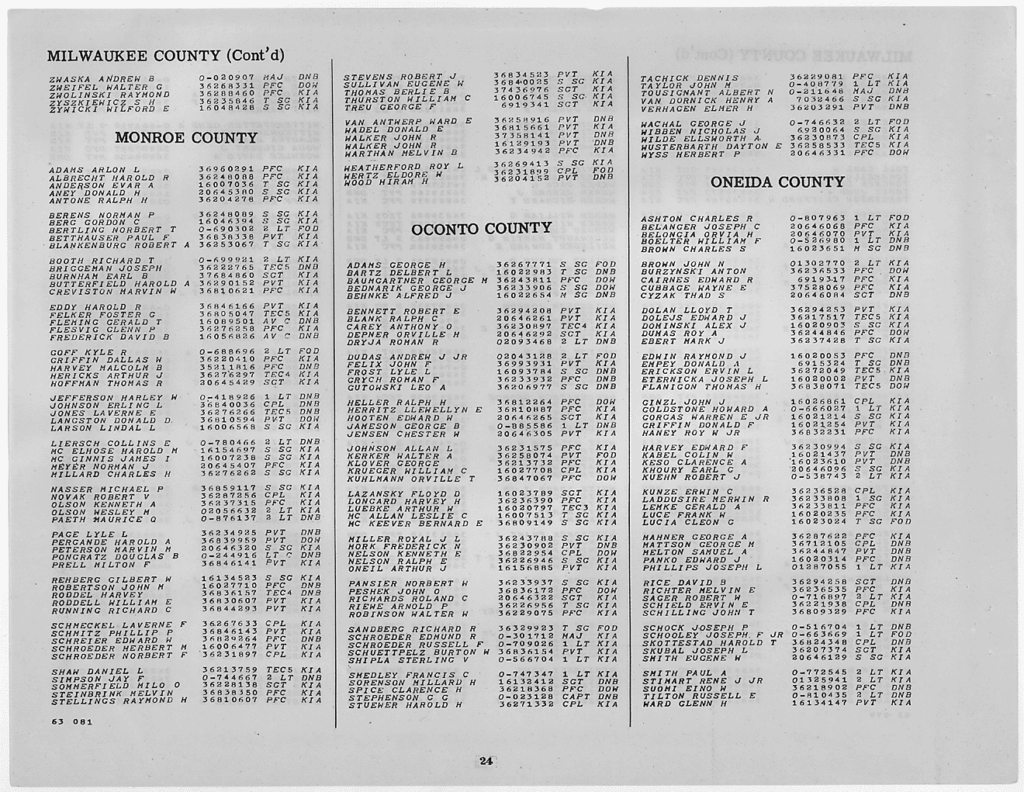Rank and Name, Sergeant David Bernhard Rice.
Unit/Placed in, Headquarters Company, Third Battalion, 508th Parachute Infantry Regiment, 82nd Airborne Brigade.
David was born on Jul. 31, 1923 at Pelican Lake, Oneida County, Wisconsin
Father, no record.
Mother, no record.
Siblings, no record.
David enlisted the service at Milwaukee, Wisconsin on Jan.5 , 1943, with Service #: 36294258.
David B. Rice was a Sgt/Tec5 in the 508th Parachute Infantry Regiment.
508th Parachute Infantry arrives in Belfast harbor on board USAT James Parker (sailed from New York during night of 27-28 December); lands and boards train in Belfast; travels by rail to Port Stewart; occupies camp near Cromore estate.
Sgt David Bernard Rice died non battle at on Sep. 10, 1945, stationed at Frankfort, Germany, and he is honored with the Good Combat Ribbon, Good Conduct Medal, American Campaign Medal, European, Middle Eastern, African Campaign Medal, WW II Victory Medal.
David was first buried/mentioned at Lorraine American Cemetery and Memorial Saint-Avold, Departement de la Moselle, Lorraine, France.
But is in February 1949 interred at Fort Snelling National Cemetery.
Thanks to Dick O’Donnell webmaster of the 508th P.I.R. http://www.508pir.org/
Jean Louis Vijgen, ww2-Pacific.com ww2-europe.com
Air Force Info, Rolland Swank.
ABMC Website, https://abmc.gov
Marines Info, https://missingmarines.com/ Geoffrey Roecker
Seabees History Bob Smith https://seabeehf.org/
Navy Info, http://navylog.navymemorial.org
POW Info, http://www.mansell.com Dwight Rider and Wes injerd.
Philippine Info, http://www.philippine-scouts.org/ Robert Capistrano
Navy Seal Memorial, http://www.navysealmemorials.com
Family Info, https://www.familysearch.org
WW2 Info, https://www.pacificwrecks.com/
Medals Info, https://www.honorstates.org
Medals Forum, https://www.usmilitariaforum.com/
Find a Grave, https://www.findagrave.com
Tank Destroyers, http://www.bensavelkoul.nl/
WordPress en/of Wooncommerce oplossingen, https://www.siteklusjes.nl/
Military Recovery, https://www.dpaa.mil/
The regiment was activated on 20 October 1942 at Camp Blanding, Florida. Lt. Col. Roy E. Lindquist formed the unit and remained its commander throughout World War II.[1] After extensive training and maneuvers the unit embarked on 19 December 1943 in New York and sailed on 28 December 1943 for Belfast, Northern Ireland, arriving on 8 January 1944. After additional training at Cromore Estate, Portstewart, the unit was moved by ship to Glasgow, Scotland and by train on 13 March 1944 to Wollaton Park, Nottinghamshire, England. A sister Regiment, the 507th Parachute Infantry Regiment, who were part of the 2nd Airborne Brigade with the 508th, were camped less than 10 miles away at a former Country Hotel called Tollerton Hall, Nottinghamshire.
The unit participated in Operation Overlord, jumping into Normandy at 2:15 a.m. on 6 June 1944. Their immediate objectives were to capture Sainte-Mère-Église, secure crossings at the Merderet River near laFiere and Chef-du-Pont, and establish a defensive line north from Neuville-au-Plain to Breuzeville-au-Plain. There they were to tie in with the 502nd Infantry Regiment. Like most paratroop units in Operation Overlord, they were dropped in the wrong locations and had extraordinary difficulty linking up with each other. During the 6 June assault, a 508th platoon leader, Lt. Robert P. Mathias, would be the first American officer killed by German fire on D-Day.
Portions of the 508th regrouped and remained in contact with German forces until relieved on 7 July when they became the division reserve force. On 13 July, they were transported back to England via two LST’s and returned to their station at Wollaton Park. Of the 2056 troops who participated in the D-Day landings, only 995 returned. The regiment suffered 1061 casualties, of which 307 were killed in action.
For its gallantry and combat action during the first three days of fighting, the unit was awarded the Distinguished Unit Citation (later re-designated as the Presidential Unit Citation), quoted in part below:
“ The 508th Parachute Infantry is cited for outstanding performance of duty in action against the enemy between 6 and 9 June 1944, during the invasion of France. The Regiment landed by parachute shortly after 0200 hours, 6 June 1944. Intense antiaircraft and machine-gun fire was directed against the approaching planes and parachutist drops. Enemy mobile antiairborne landing groups immediately engaged assembled elements of the Regiment and reinforced their opposition with heavily supported reserve units. Elements of the Regiment seized Hill 30, in the wedge between the Merderet and Douve Rivers, and fought vastly superior enemy forces for three days. From this position, they continually threatened German units moving in from the west, as well as the enemy forces opposing the crossing of our troops over the Merderet near La Fiere and Chef-du-Pont.
They likewise denied the enemy opportunity to throw reinforcements to the east where they could oppose the beach landings. The troops on Hill 30 finally broke through to join the airborne troops at the bridgehead west of La Fiere on 9 June 1944. They had repelled continuous attacks from infantry, tanks, mortars, and artillery for more than 60 hours without resupply. Other elements of the 508th Parachute Infantry fought courageously in the bitter fighting west of the Merderet River and in winning the bridgeheads across that river at La Fiere and Chef-du- Pont. The regiment secured its objectives through heroic determination and initiative. Every member performed his duties with exemplary aggressiveness and superior skill. The courage and devotion to duty shown by members of the 508th Parachute Infantry are worthy of emulation and reflect the highest traditions of the Army of the United States.[2]
”
After their success in Normandy, the regiment returned to its billet at Wollaton Park and prepared for its part in Operation Market Garden, jumping on 17 September 1944. The regiment established and maintained a defensive position over 12,000 yards (11,000 m) in length, with German troops on three sides of their position. They seized a key bridge and prevented its destruction. Other units prevented the demolition of theWaal river Bridge at Nijmegen. The regiment additionally seized, occupied, organized and defended the Berg en Dal hill mass, terrain which controlled the Groesbeek-Nijmegen area. They cut Highway K, preventing the movement of enemy reserves, or escape of enemy along this important international route. After being relieved in the Netherlands, they continued fighting the Germans in the longest-running battle on German soil ever fought by the U.S. Army, then crossing the border into Belgium.
The regiment later played a part in the Battle of the Bulge, during which they screened the withdrawal of some 20,000 troops from St. Vith and defended their positions against the German Panzer divisions. They also participated in the assault led by the 2nd Ranger Battalion to capture (successfully) Hill 400. Col. Lindquist relinquished command of the regiment to Lt. Col. Otho Holmes in December, 1945.[1] The unit was inactivated on 25 November 1946.
Pvt Rice was promoted to the grade of Tec/5 on 2 February 1945. He was awarded the Bronze Star Medal For Heroic Conduct during the Holland Campaign.
They patrolled the wire lines in the Third Battalion to prevent any enemy attempt to tap in on the lines. During his tour, a heavy artillery barrage knocked out all of the lines. Private RICE immediately went to Company “I'”s CP [Command Post] to secure aid. While at this location, the enemy attacked Company “G” with great ferocity. Realizing the importance of reestablishing lines of communication with the company under attack, Private RICE located the wire lines and worked his way to Company “G”‘s position through heavy enemy and friendly machine gun fire, repairing the breaks. He administered first aid to the wounded he encountered as he went along. He succeeded in repairing the line and was the first to contact his battalion headquarters and give word of the situation. He remained at his communication until the enemy was repulsed with heavy [illegible]. His actions reflect great credit upon himself and upon the Airborne Forces of the United States Army.
He was also awarded the Bronze Service Arrowhead device for the Holland campaign.
